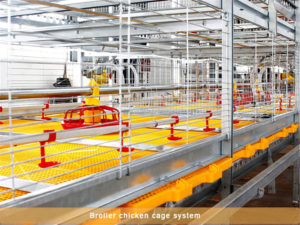1, create a clean and hygienic environment
Thoroughly clean and disinfect the brooding house before brooding to create a clean and hygienic environment for the chicks. Wash the floor and wall windows and windows first, clean the brooder with a high-pressure water gun after cleaning, and then open the doors and windows to let the natural wind dry. After the disinfection is completed, the drinking fountain, the feeding basin and other utensils will be cleaned and put into the brooding house with disinfectant water. The doors and windows around the house will be disinfected, and the environment and personnel and equipment will be disinfected. Disinfect and close the brooding and isolate in types of poultry equipment.
2, maintain a suitable temperature and humidity
The temperature during the brooding period should be maintained at about 35 °C in the first week of shelling, and then drop by 2 to 3 °C per week until about 20 °C. When the chicks are active during the day, the temperature can be slightly lower, and the temperature can be slightly higher when the chicks are resting at night. Humidity has a great influence on the growth and development of chicks. Generally, in order to prevent dehydration in the early stage of brooding, the relative humidity is high, which is about 75% in the first week and about 65% in the second week. After 20 days of age, due to the increase in feed intake, water consumption and excretion of chicks, the brood house is prone to moisture, so ventilation should be strengthened to ensure that the relative humidity in the house is between 40% and 55%. Under normal temperature and humidity conditions, the chicks have a normal diet, lively and spirited.

3, timely “open drink” and nutritional balance
Generally, the chicks should be allowed to drink water within 24 hours of shelling. For the first time, water can be added with warm water and a proper amount of broad-spectrum antibacterial syrup for disinfection of the gastrointestinal tract and cleaning of bacteria in the gastrointestinal tract. Change to drink 10% to 15% glucose water or normal saline. Chicks grow fast and have a strong metabolism, so ensure adequate free drinking and feeding.
4, to ensure light, density and ventilation
Density should be moderate, density is a waste of labor, and small chicks are likely to cause mutual squeeze when eating and drinking water, and weak chicks can’t eat water and eat. There is no suitable space for exercise. Chicks should be ventilated in a high temperature environment to avoid premature respiratory disease and other diseases in layers battery cage system.